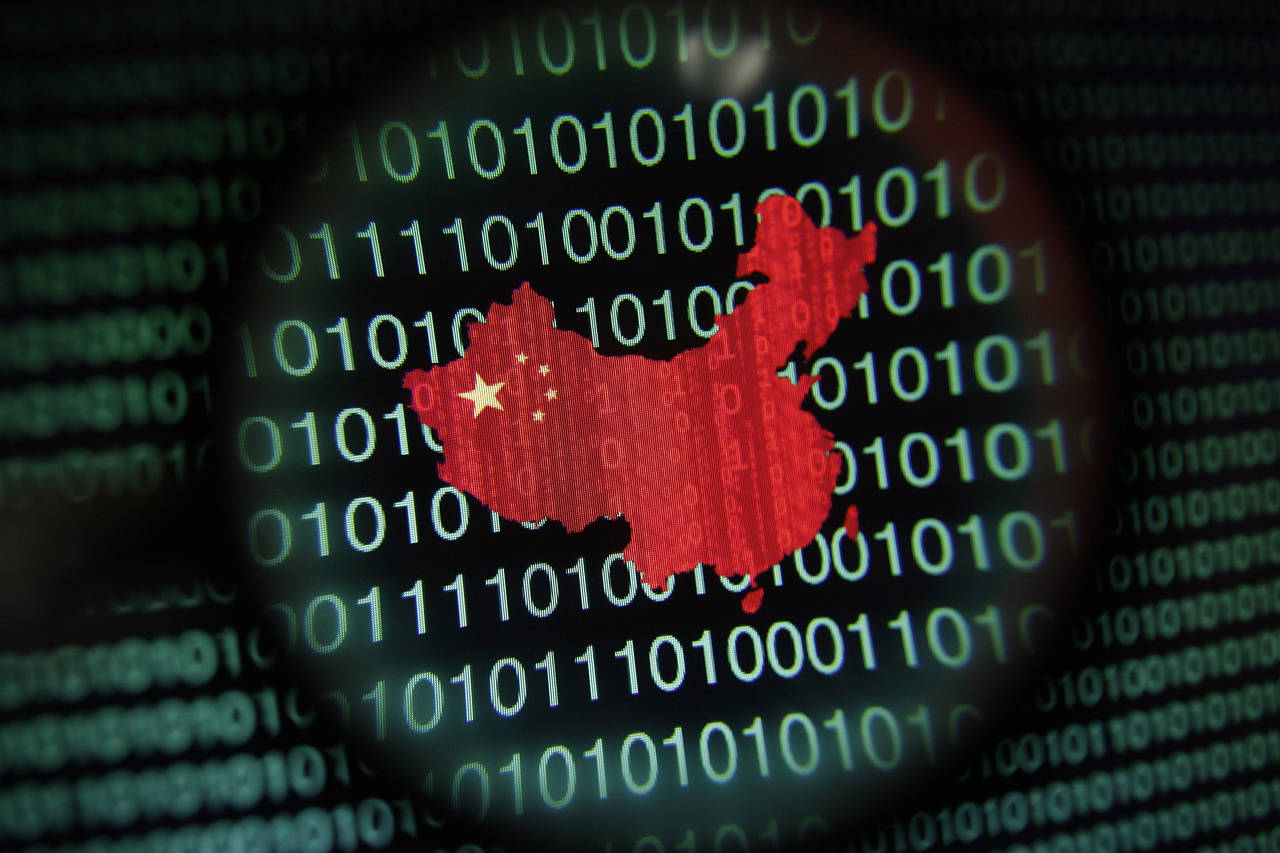China is the manufacturing superpower | Hacker News – a statement that sparks both awe and concern. This article dives into the fascinating rise of China’s manufacturing dominance, exploring its historical context, key strengths, and the challenges it faces in maintaining its global leadership. We’ll examine the impact on the global economy and geopolitical landscape, considering both opportunities and risks.
From its humble beginnings to its current position as a global manufacturing powerhouse, China’s journey is a compelling case study in economic development. We’ll look at the specific sectors where China excels, the strategies it employs, and the potential future scenarios that could shape its continued success (or decline). This isn’t just about numbers and statistics; it’s about understanding the intricate web of factors that have made China a key player in the global economy and the implications for the rest of the world.
China’s Manufacturing Dominance
China’s rise as the world’s manufacturing superpower is a remarkable story of economic transformation. From a largely agrarian economy just a few decades ago, China has become the factory of the world, impacting global trade, geopolitics, and the daily lives of billions. This article explores the key factors behind China’s manufacturing dominance, the challenges it faces, and its potential future trajectory.
China’s Manufacturing Dominance: Historical Context

China’s journey to manufacturing dominance began with significant policy shifts following the economic reforms initiated by Deng Xiaoping in the late 1970s. These reforms opened the country to foreign investment, creating Special Economic Zones (SEZs) that attracted multinational corporations seeking low-cost labor and access to a vast market. Simultaneously, government investments in infrastructure, education, and technology played a crucial role.
That Hacker News thread about China’s manufacturing dominance is interesting, especially considering recent events. It makes you wonder how a potential disruption, like the one discussed in this article about China’s current situation What is HMVP virus, Chinas recent ‘Covid-like outbreak’, should , might impact global supply chains. Ultimately, China’s manufacturing prowess remains a key factor in the world economy, regardless of temporary setbacks.
Compared to other major economies like the US and Japan in previous decades, China offered a compelling combination of low labor costs, a large and increasingly skilled workforce, and a government actively promoting industrial growth. This contrasted sharply with the higher labor costs and increasingly automated manufacturing landscapes of developed nations.
A timeline highlighting key milestones in the development of Chinese manufacturing:
- Late 1970s: Economic reforms initiated, opening the door to foreign investment.
- 1980s-1990s: Establishment of Special Economic Zones (SEZs) and rapid growth in export-oriented manufacturing.
- 2001: Accession to the World Trade Organization (WTO), further integrating China into the global economy.
- 2000s-Present: Emergence as the world’s largest manufacturer, dominating various sectors.
Key Sectors and Strengths of Chinese Manufacturing, China is the manufacturing superpower | Hacker News
China’s manufacturing prowess is evident across numerous sectors. Its advantages stem from a confluence of factors including low labor costs (though this is changing), access to raw materials, a vast domestic market, and increasingly sophisticated technological capabilities. Several Chinese companies have become global leaders in their respective fields.
So, you’re reading about China’s manufacturing dominance on Hacker News – fascinating stuff, right? It makes you think about the sheer scale of global power dynamics. Meanwhile, completely unrelated but equally headline-grabbing, check out this article: Federal courts won’t refer Clarence Thomas for DOJ investigation. It’s a stark reminder that political power plays out on a very different stage.
Back to China’s manufacturing though – it’s a huge factor shaping the global economy.
| Sector | Dominant Companies | Key Advantages | Global Market Share (Illustrative) |
|---|---|---|---|
| Electronics | Huawei, Xiaomi, Foxconn | Low labor costs, large domestic market, strong supply chains | Significant and growing |
| Textiles | Numerous large and small manufacturers | Abundant raw materials, low labor costs, established infrastructure | High, though facing increasing competition |
| Solar Panels | Trina Solar, JA Solar | Government support, economies of scale, technological advancements | Dominant |
Challenges and Limitations Facing Chinese Manufacturing
Despite its dominance, China’s manufacturing sector faces significant challenges. Rising labor costs, increasing competition from other nations (particularly Vietnam and India), trade disputes, and environmental concerns are key issues. Supply chain vulnerabilities, highlighted by recent global disruptions, are also a significant concern. China is addressing these challenges through investments in automation, technological upgrades, and a shift towards higher-value manufacturing.
These strategies are comparable to those employed by other leading manufacturing nations, although the scale and scope of China’s efforts are unparalleled.
The Future of Chinese Manufacturing

Over the next decade, China’s manufacturing sector will likely experience a period of transformation. Automation and technological advancements, including artificial intelligence and robotics, will play a pivotal role. We might see a shift towards higher-value manufacturing, focusing on advanced technologies and innovation. Scenarios could include increased domestic consumption driving manufacturing growth, or a continued focus on exports, adapting to changing global trade dynamics.
China’s ability to navigate geopolitical complexities and maintain access to key resources and technologies will be crucial in determining its continued competitiveness.
That Hacker News thread about China’s manufacturing dominance got me thinking – global supply chains are complex! To even get the medical instruments used in surgery, you need skilled technicians, which brings me to finding accredited surgical tech programs near me with clinical rotations. It’s fascinating how such diverse fields connect; the precision needed in both manufacturing and surgical technology is remarkable, highlighting the importance of skilled labor globally, even in the face of China’s manufacturing might.
Impact on Global Economy and Geopolitics
China’s manufacturing dominance profoundly impacts the global economy and geopolitical landscape. Its influence on global supply chains is undeniable, affecting trade patterns and the economies of numerous countries. The geopolitical implications are significant, influencing international relations and power dynamics. This impact is felt by various stakeholders.
- Consumers: Access to lower-priced goods, but also potential supply chain disruptions.
- Businesses: Opportunities for sourcing and manufacturing, but also increased competition.
- Governments: Trade negotiations, economic policies, and national security concerns.
Illustrative Examples: Case Studies

Several case studies illustrate the complexities of Chinese manufacturing. The success of companies like Huawei in the telecommunications sector, despite facing geopolitical challenges, demonstrates strategic capabilities. Conversely, the struggles faced by some textile manufacturers in adapting to rising labor costs and competition highlight the need for continuous innovation. Trade disputes, such as those involving solar panels, illustrate the intricate interplay between global trade and national interests.
| Company/Event | Sector | Challenges/Successes | Global Impact |
|---|---|---|---|
| Huawei | Telecommunications | Success despite geopolitical challenges; technological innovation | Significant impact on global 5G infrastructure |
| Textile Manufacturers (general example) | Textiles | Challenges from rising labor costs and competition | Shifting manufacturing to lower-cost regions |
| US-China Trade War (Solar Panels) | Solar Energy | Tariffs and trade disputes | Disruptions in global solar panel supply chains |
Last Word

China’s reign as the world’s manufacturing superpower isn’t guaranteed. While its current advantages are significant, rising labor costs, technological competition, and geopolitical uncertainties present serious hurdles. The future will likely see a shift towards automation and a more nuanced global manufacturing landscape. Understanding China’s role in this evolving scenario is crucial for businesses, governments, and consumers alike.
The country’s ability to adapt and innovate will ultimately determine its continued dominance in the years to come.
Common Queries: China Is The Manufacturing Superpower | Hacker News
What are the biggest threats to China’s manufacturing dominance?
Rising labor costs, increasing automation in competing countries, trade wars and protectionist policies, and environmental concerns are all significant threats.
How does China’s manufacturing impact consumers globally?
It leads to lower prices for many goods, but also raises concerns about ethical labor practices and environmental sustainability.
What role does the Belt and Road Initiative play in China’s manufacturing strategy?
It aims to improve infrastructure and trade connections, giving China better access to raw materials and export markets, strengthening its manufacturing base.
Is China focusing on higher-value manufacturing?
Yes, China is actively trying to move away from low-cost, labor-intensive manufacturing towards higher-value-added industries like technology and advanced manufacturing.
